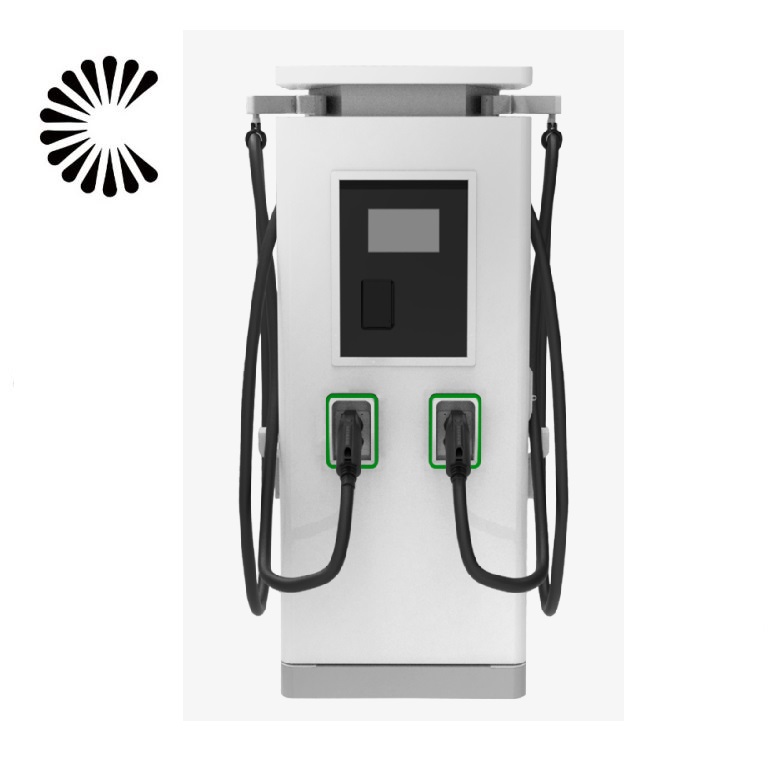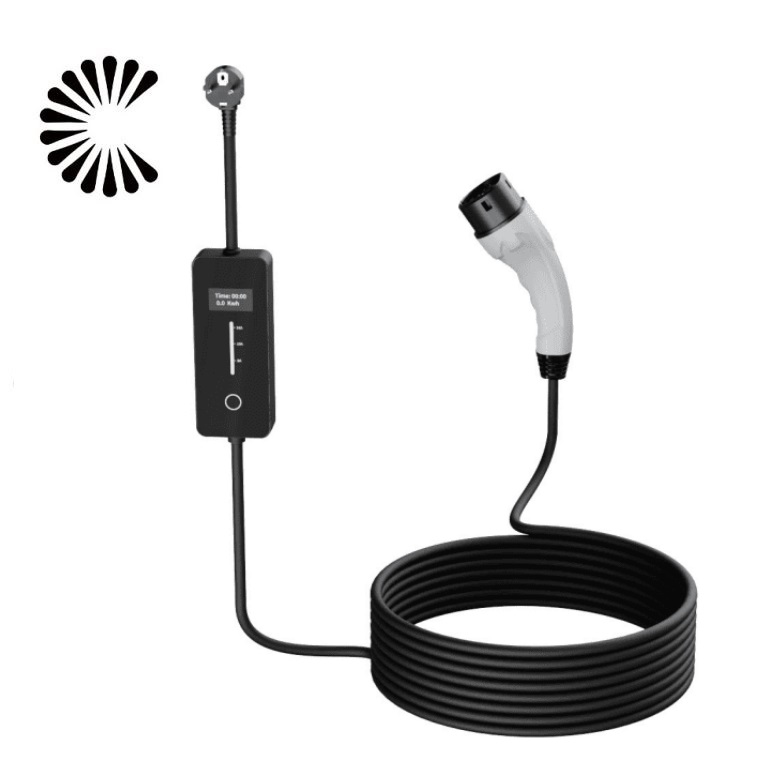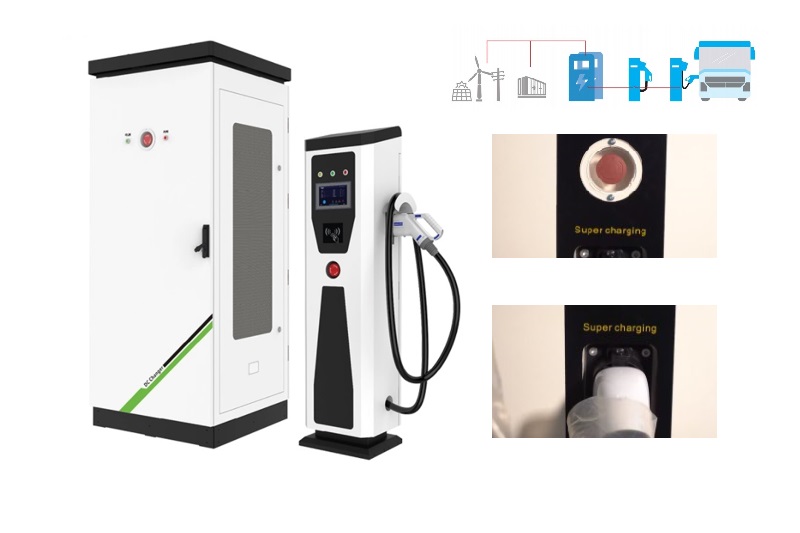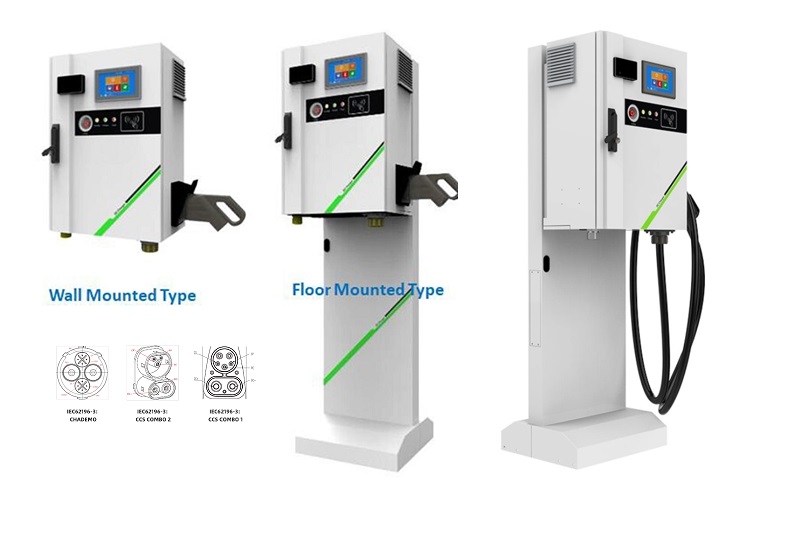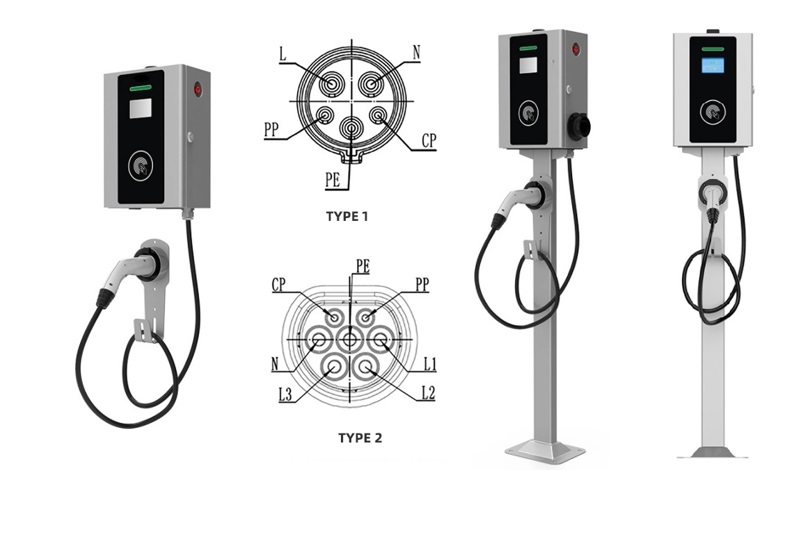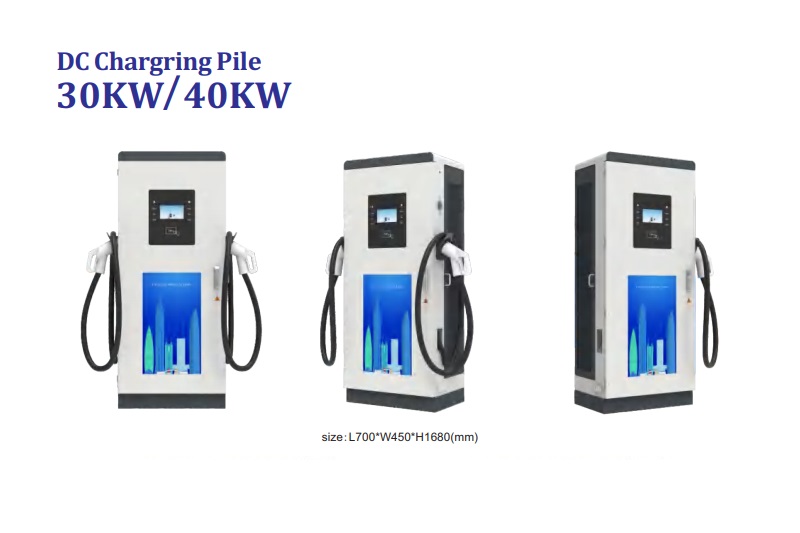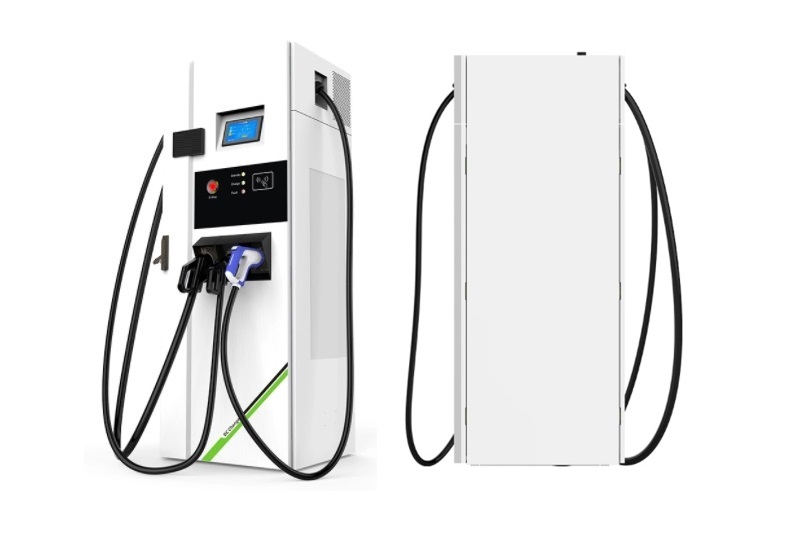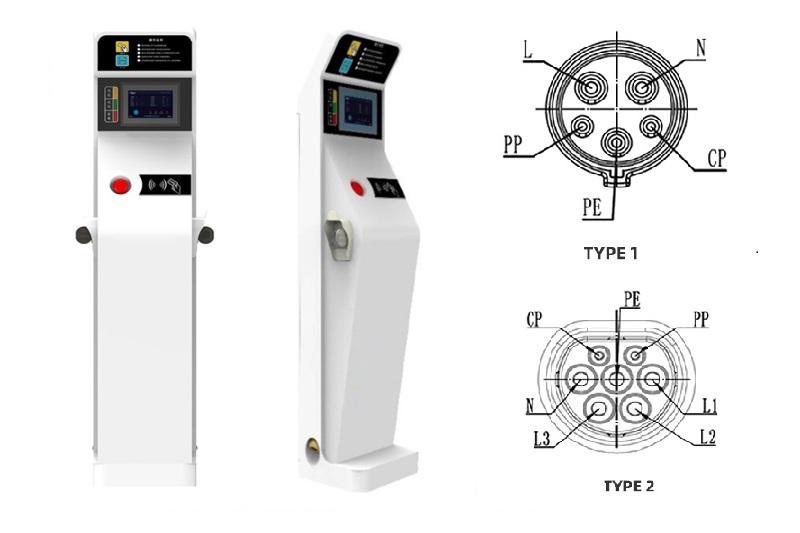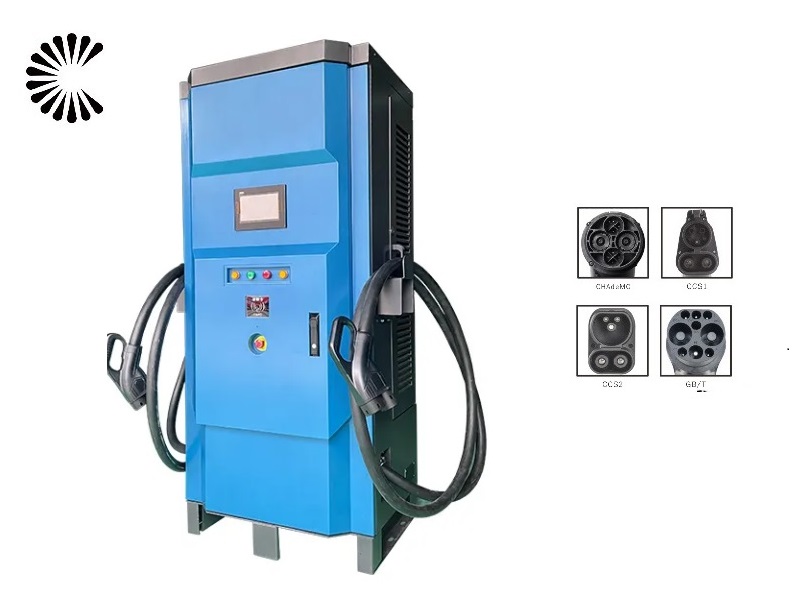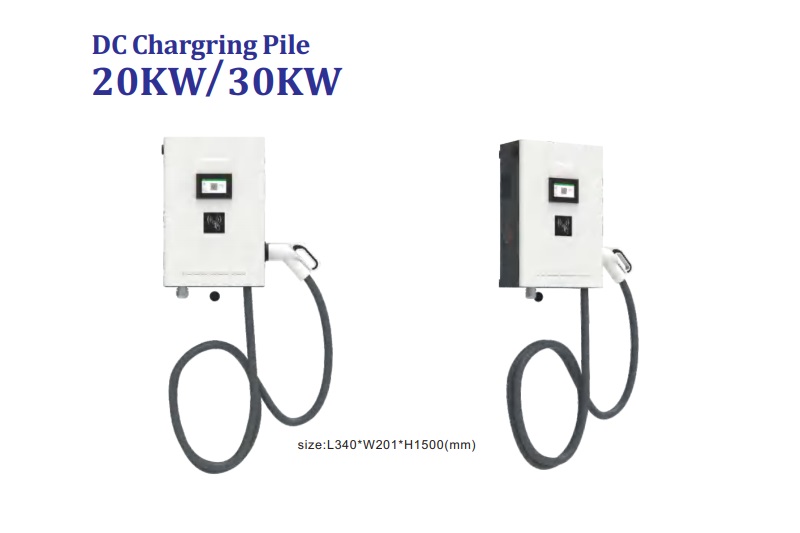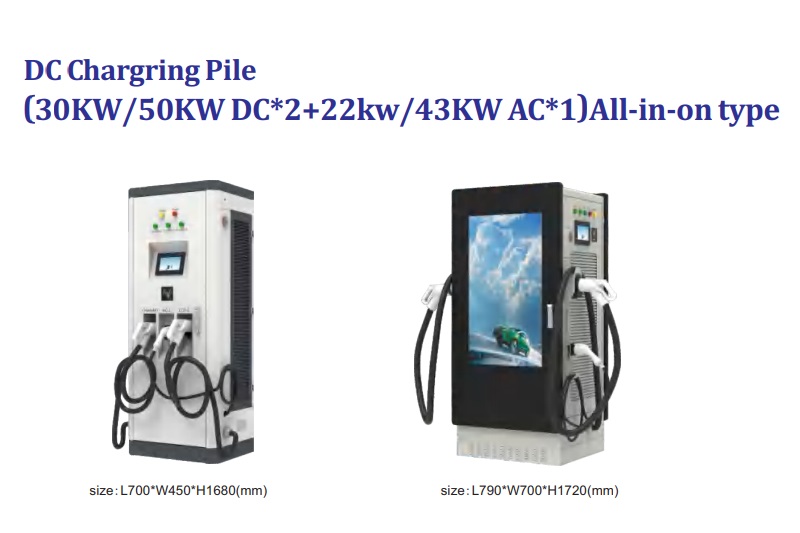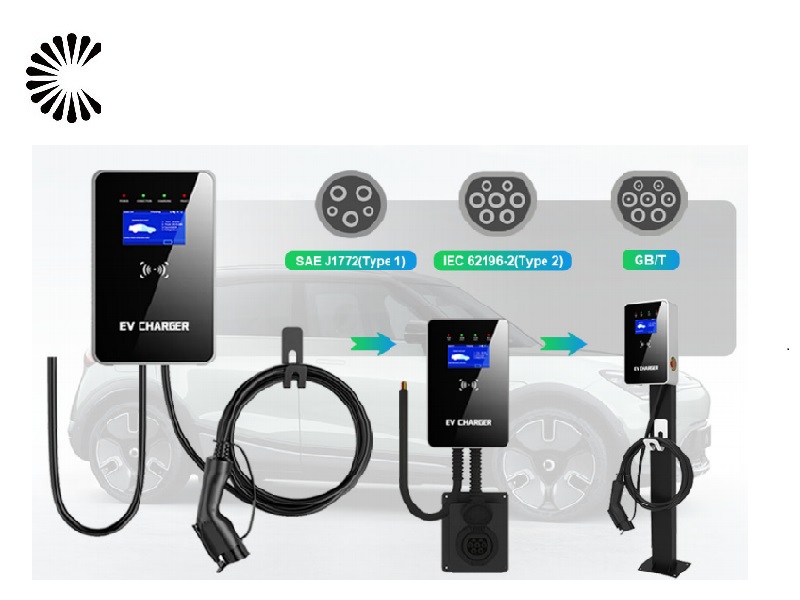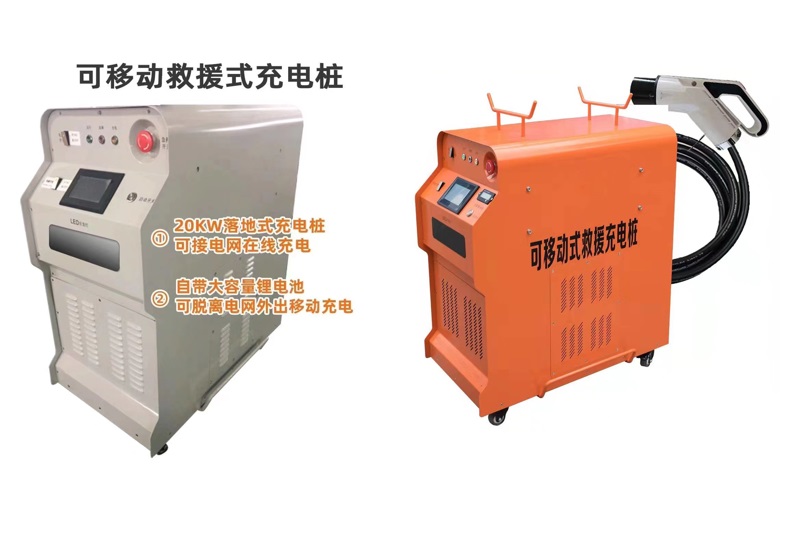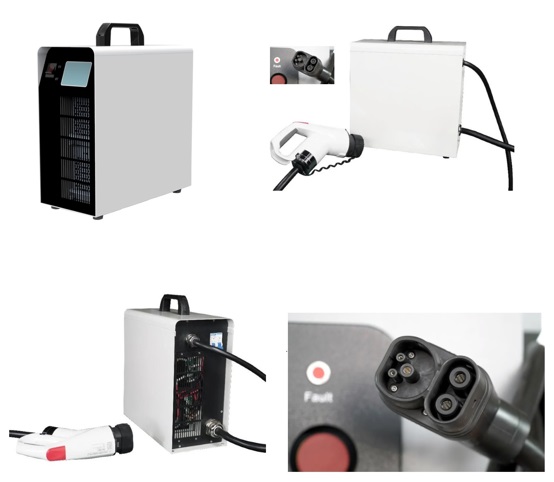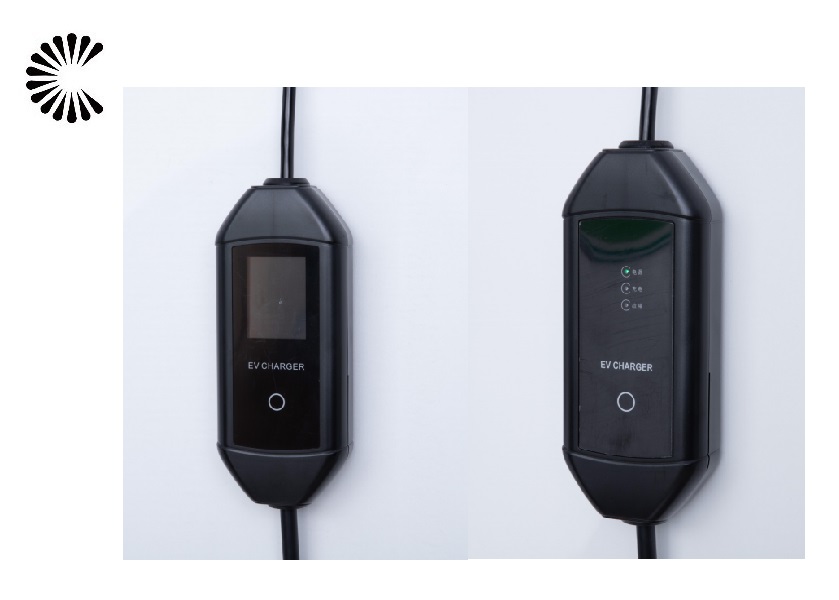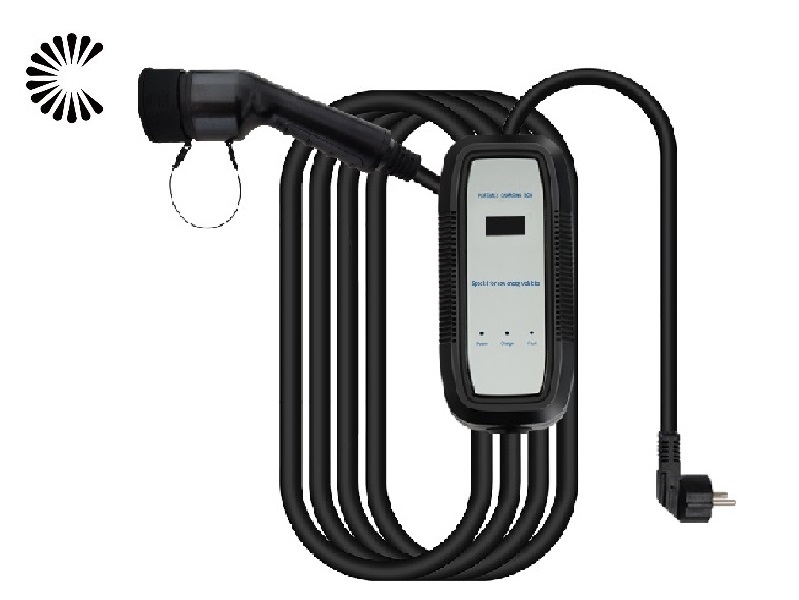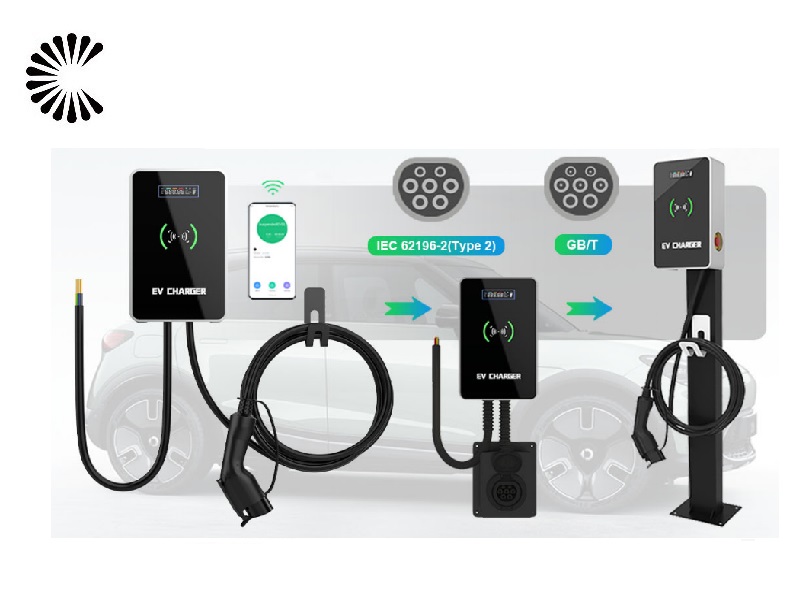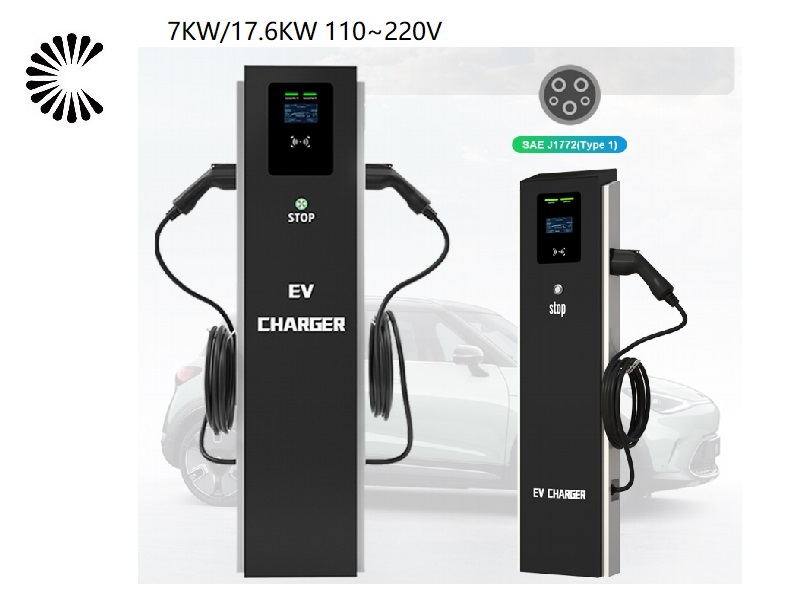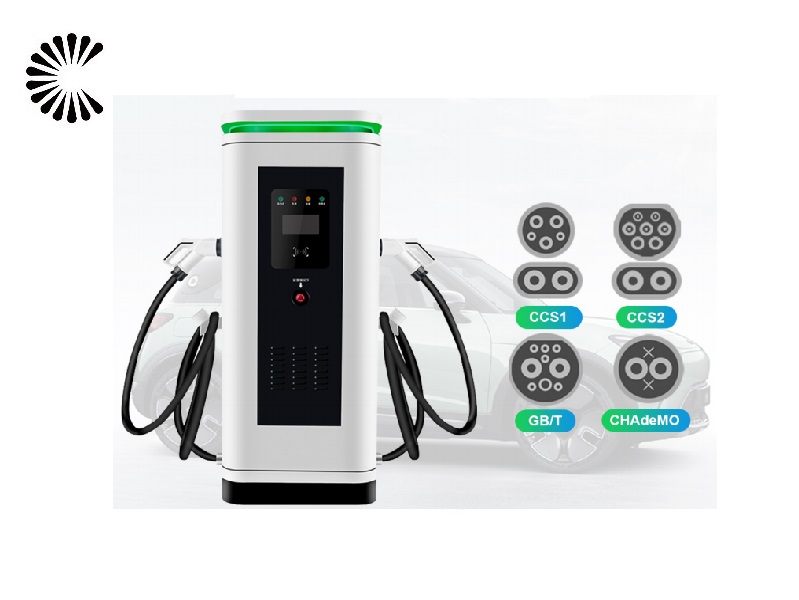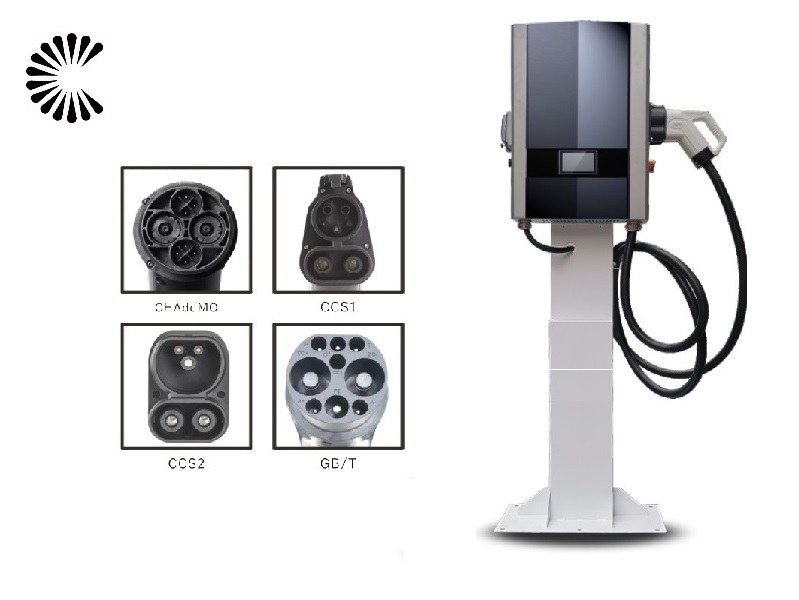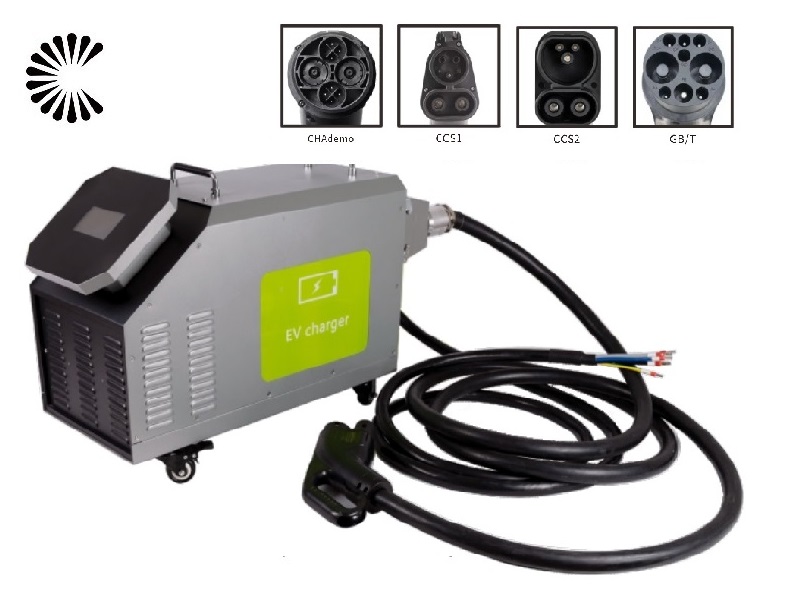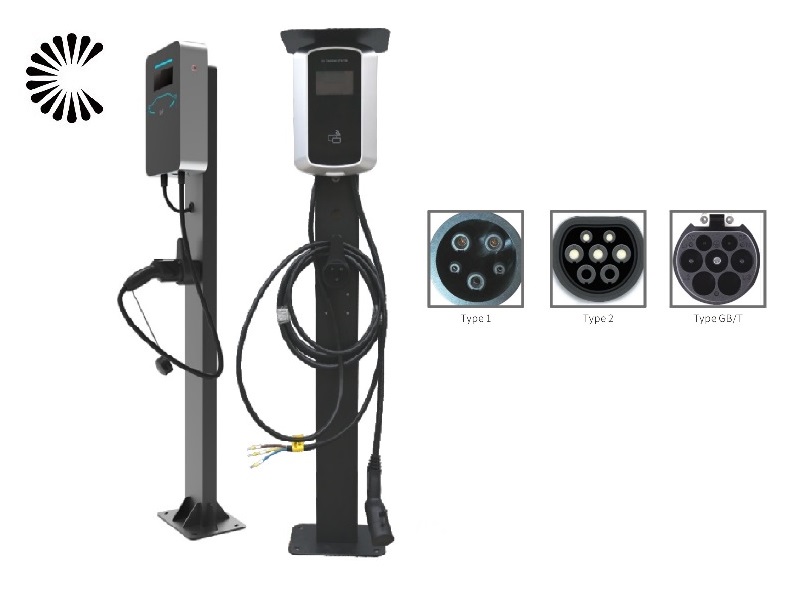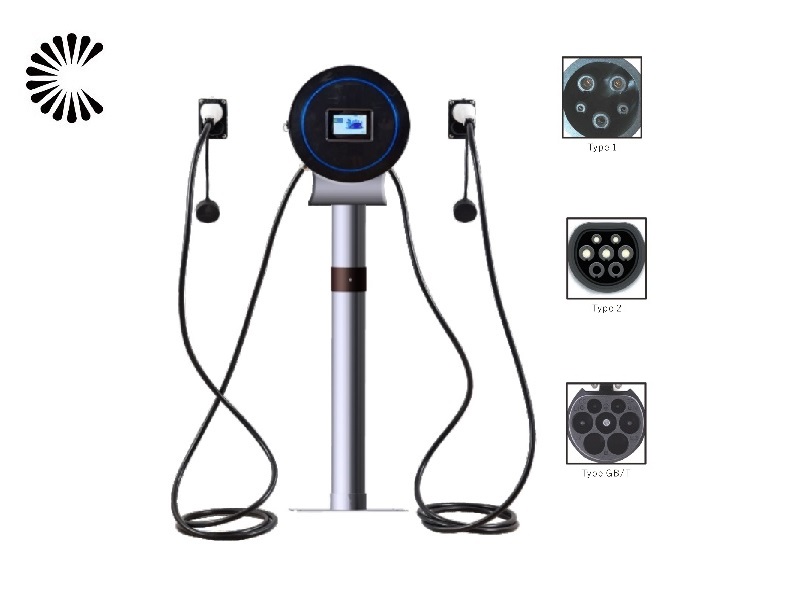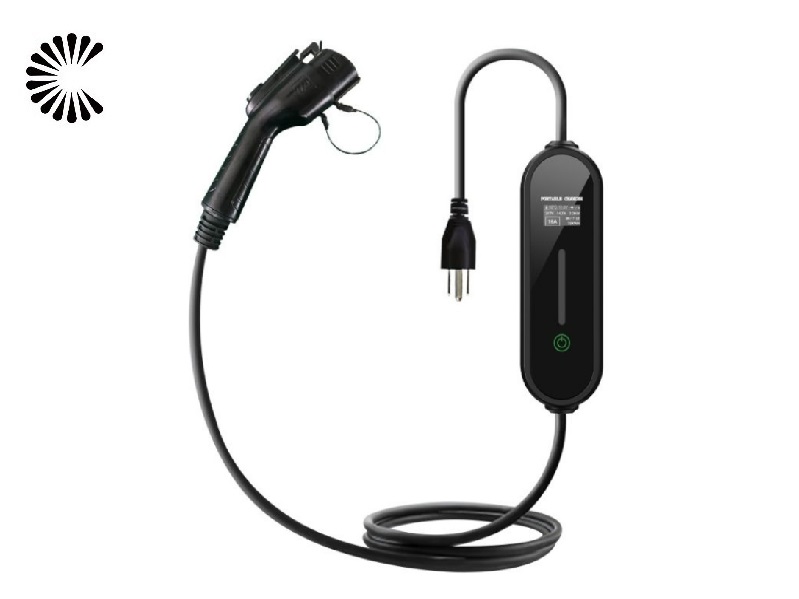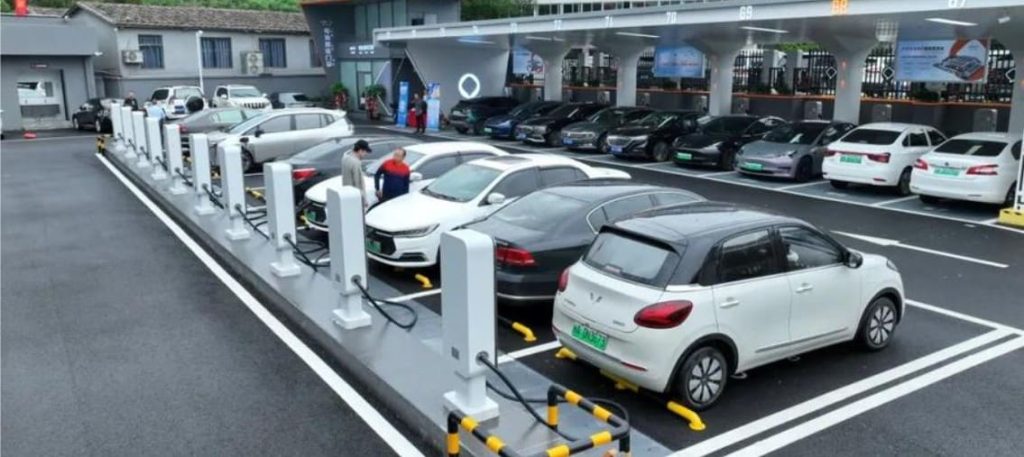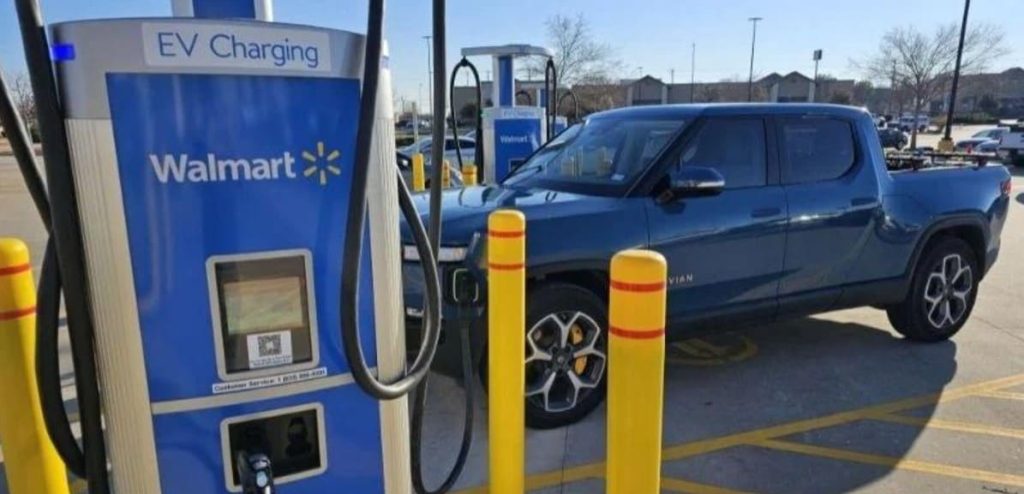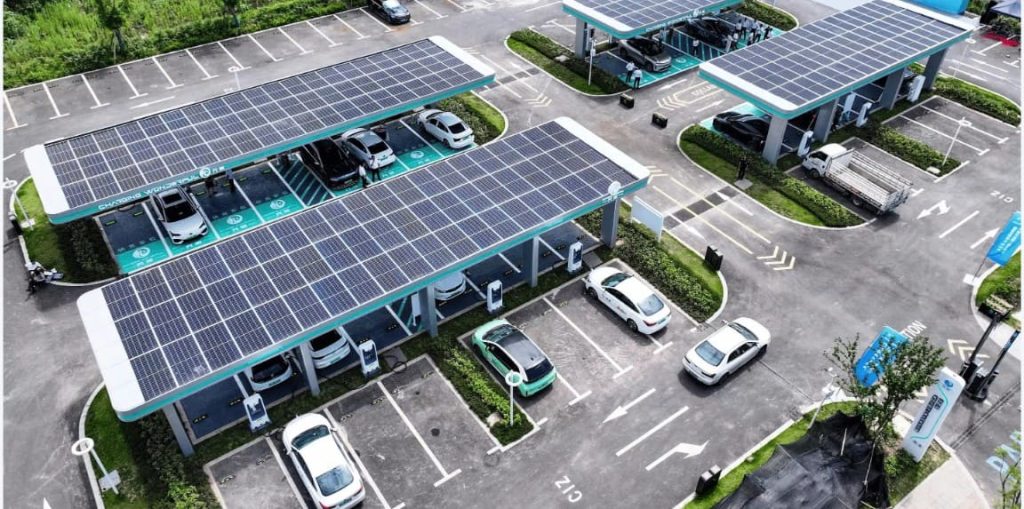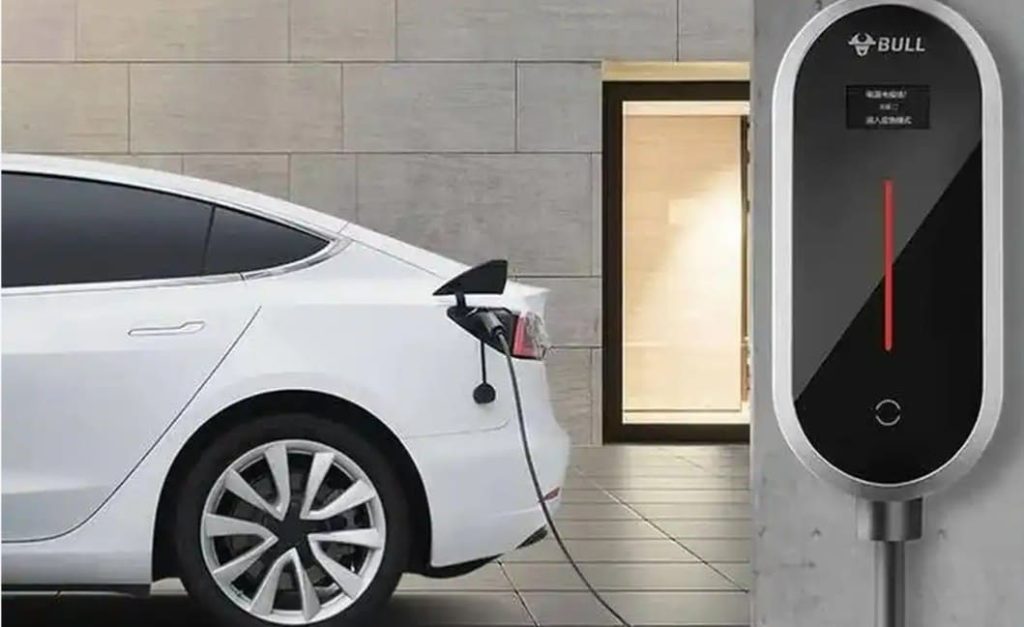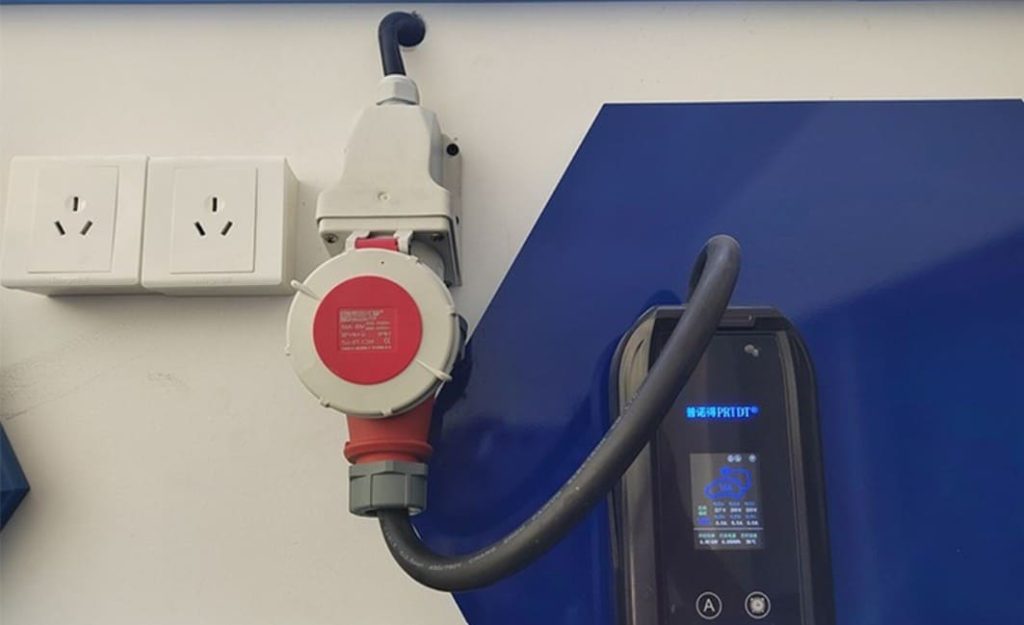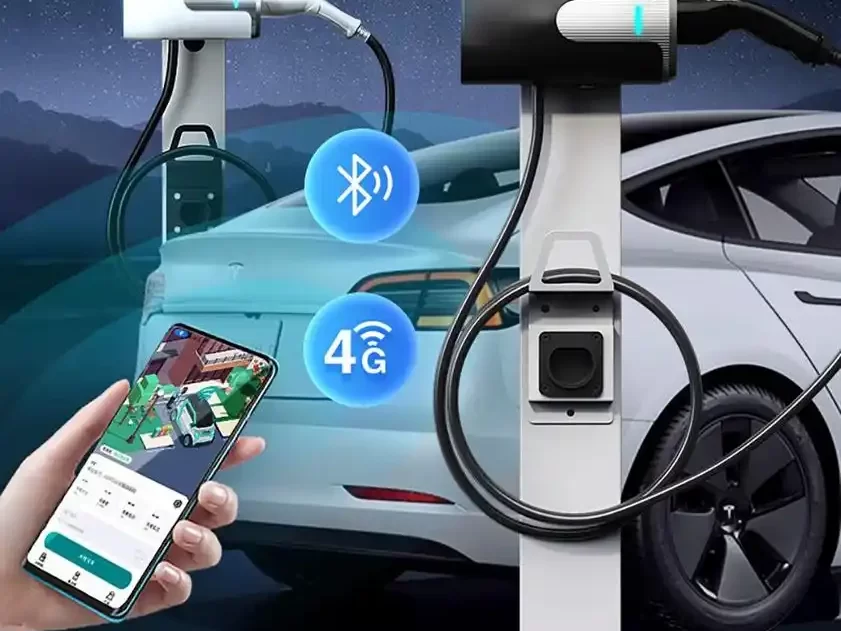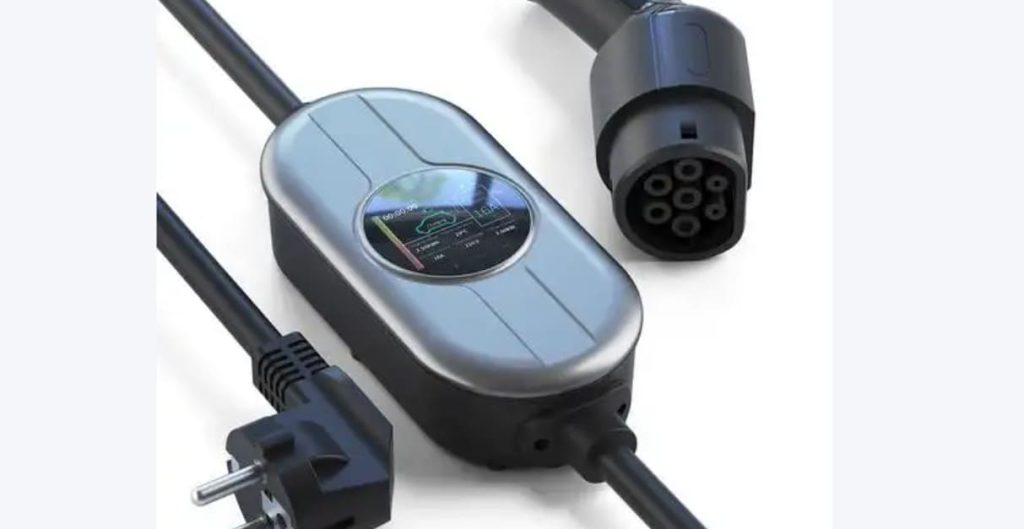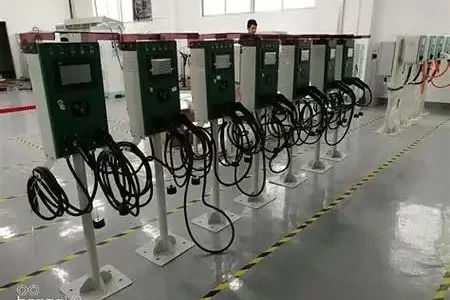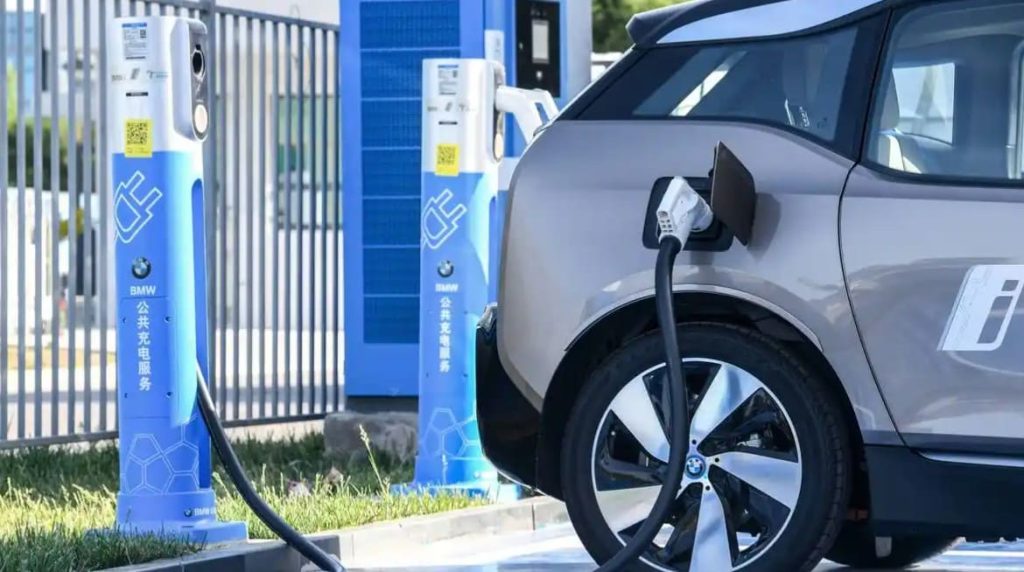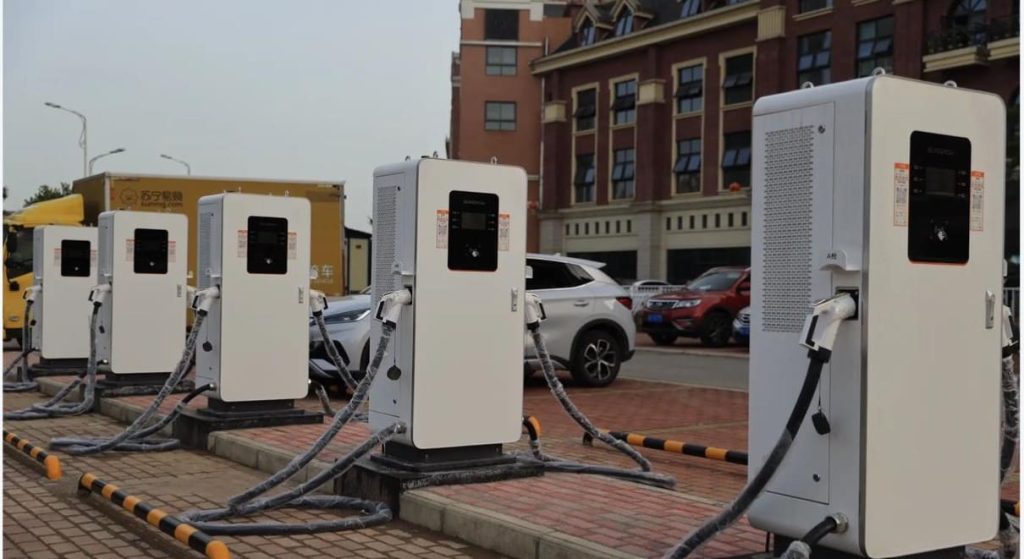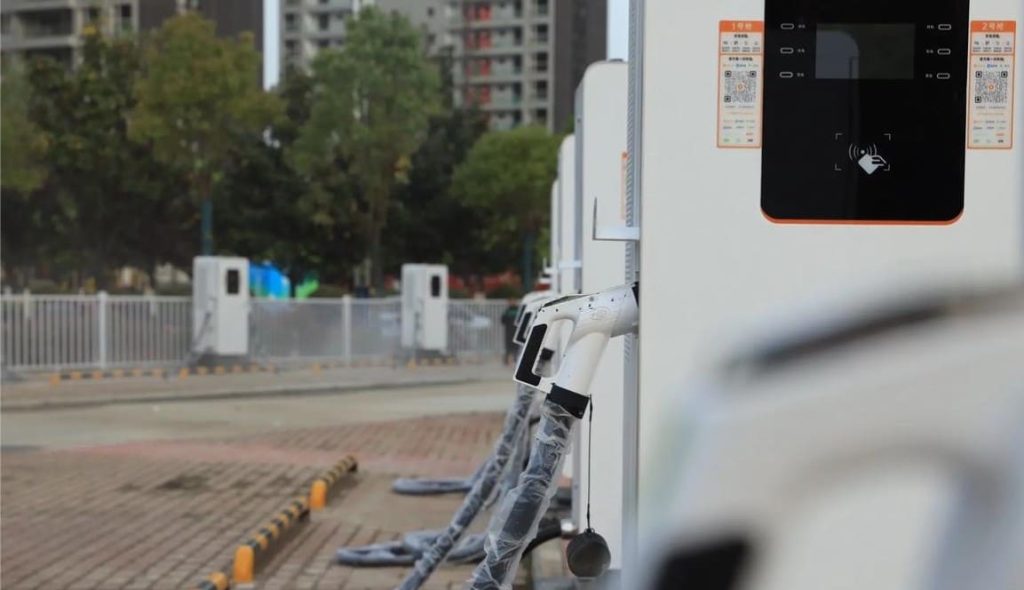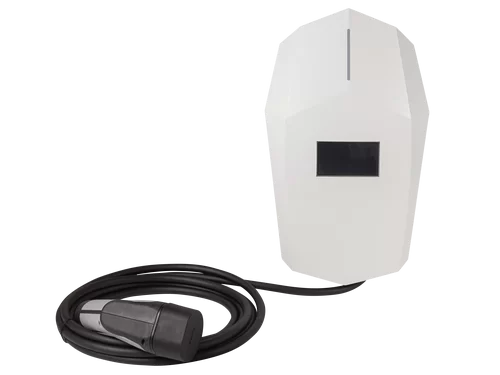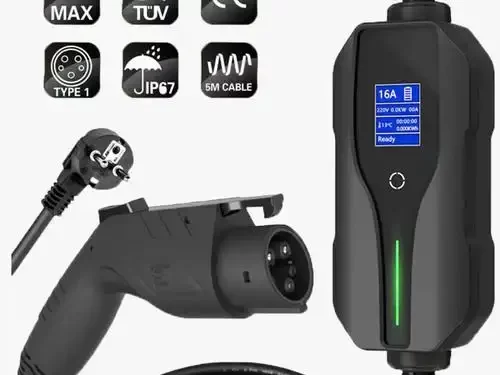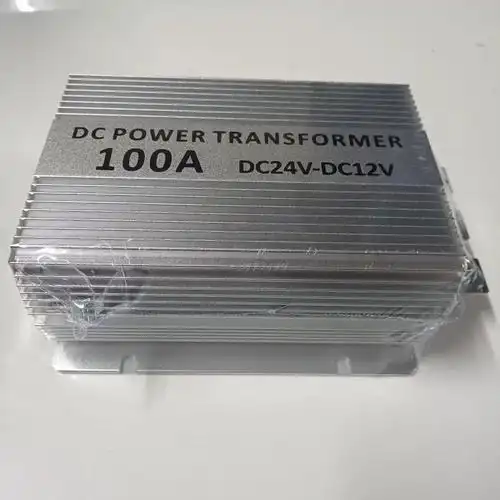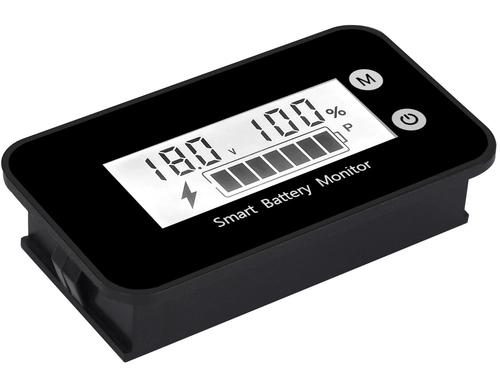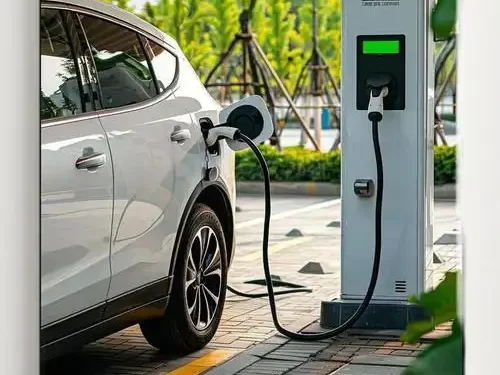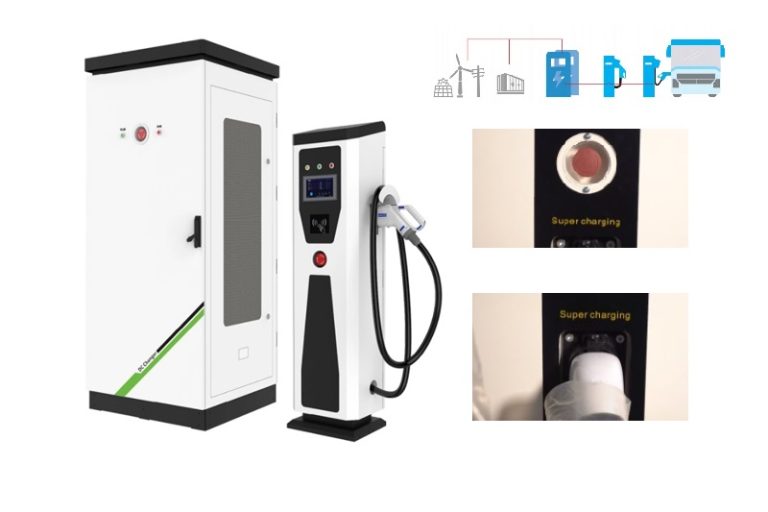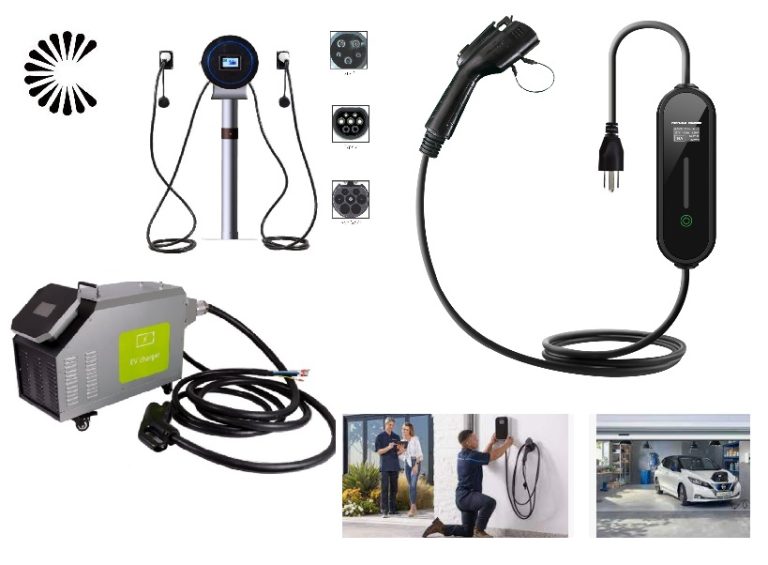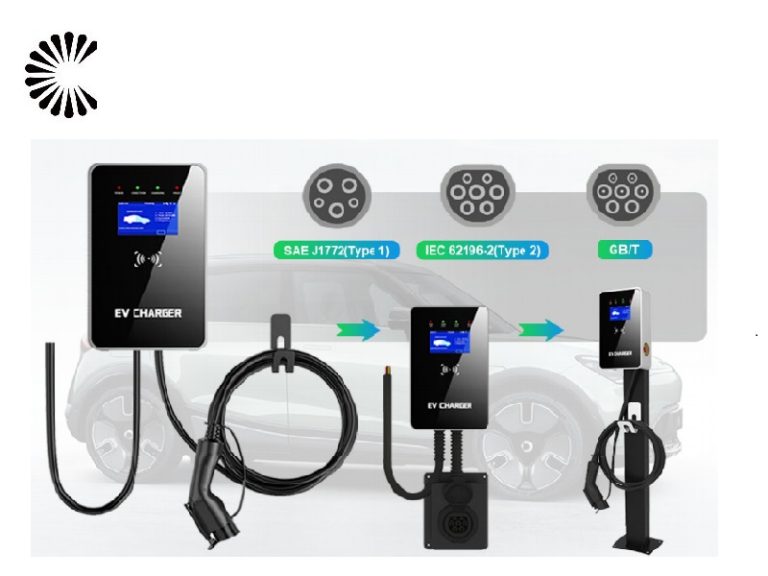Portable 30KW EV Charger

Portable 30KW EV Charger Wholesale Manufacturer In China
Introducing our state-of-the-art Portable 30KW EV Charger! Designed with convenience and efficiency in mind, this cutting-edge charger allows you to power up your electric vehicle anytime, anywhere. With its compact and portable design, you can now enjoy the freedom of recharging your EV on the go. Equipped with advanced technology, our charger offers a fast and reliable charging experience, delivering up to 30KW of power to your vehicle. Whether you’re on a road trip or simply need a quick top-up, our portable charger ensures that you never have to worry about running out of battery power again.
Safety is our top priority, and our charger is built with robust protective features to safeguard both your vehicle and charging process. Its user-friendly interface and intuitive controls make it easy for anyone to operate, providing a hassle-free charging experience.
Specification of 30KW Portable EV Charger
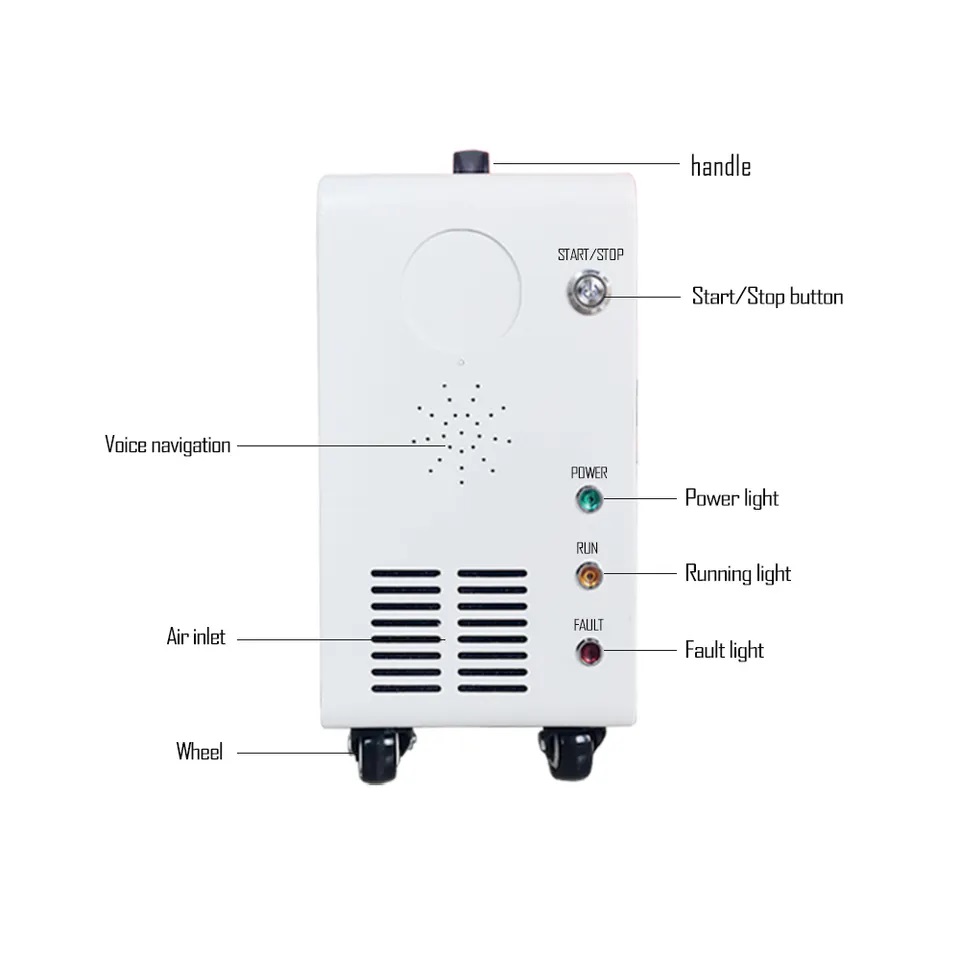
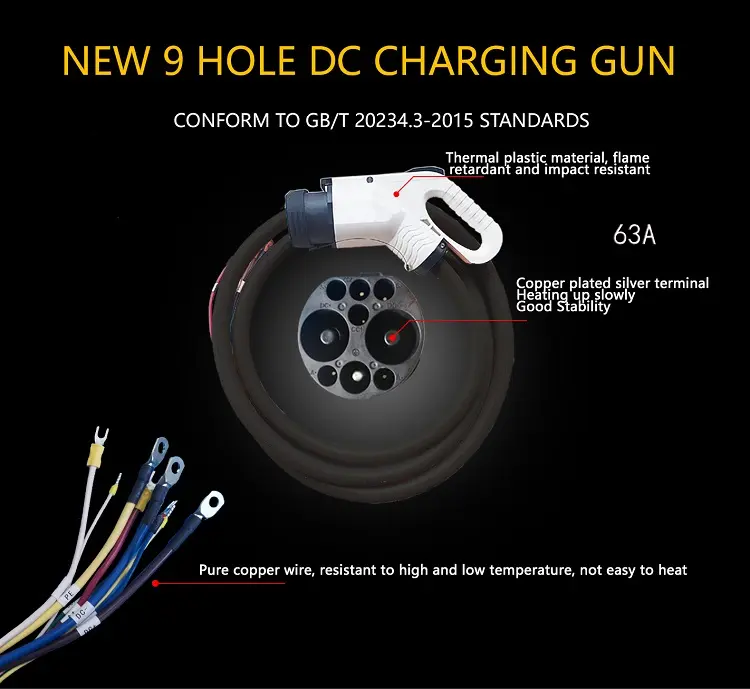

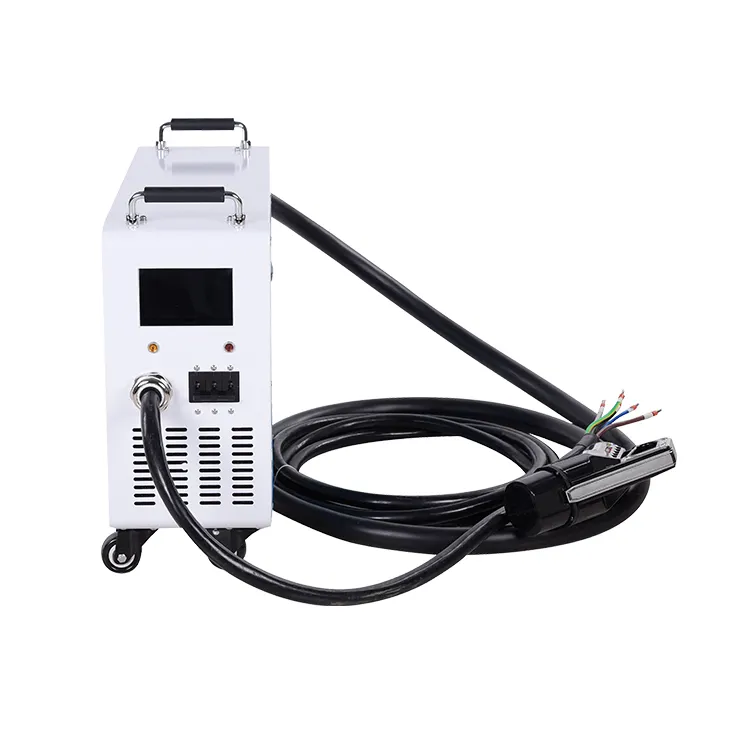

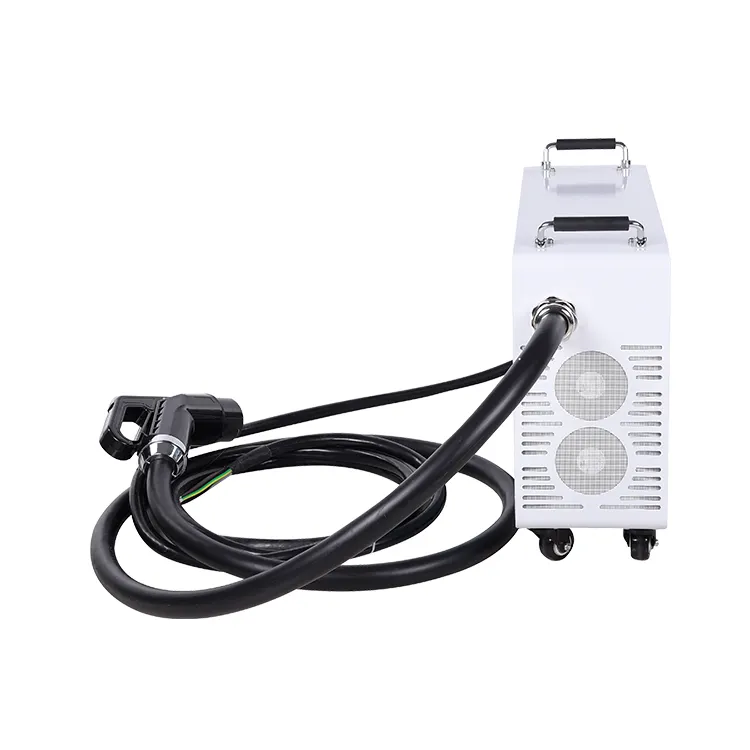


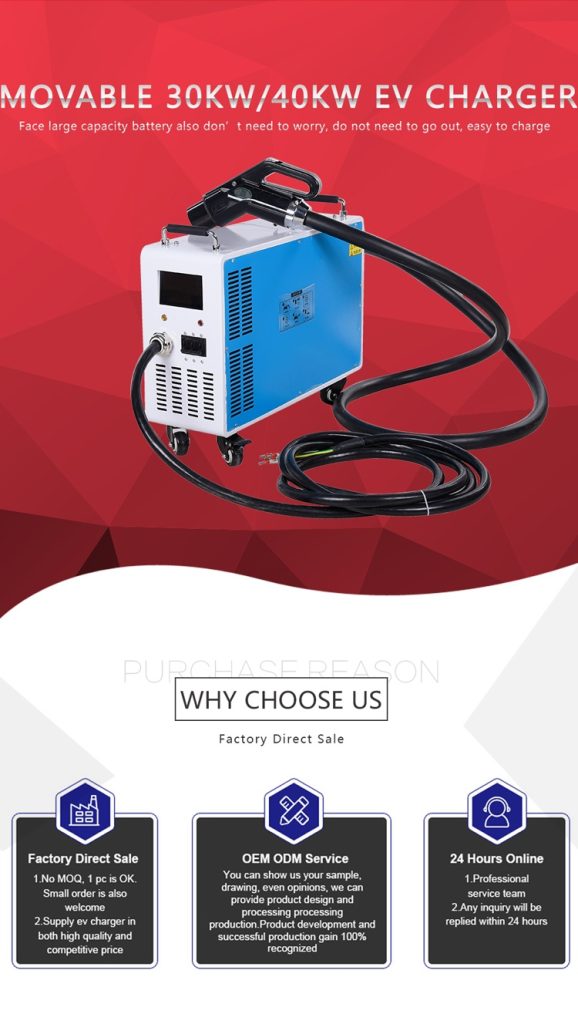
Wholesale Price for 30KW (See more price list):
| Wholesale Order Quantity (Units) | Price |
| 1 – 1 sets | $3,720.00 |
| 2 – 9 sets | $3,600.00 |
| >= 10 sets | $3,480.00 |
Lead Time:
| Quantity (sets) | 1 – 1 | 2 – 2 | 3 – 6 | > 6 |
| Lead time (days) | 7 | 10 | 15 | To be negotiated |
Appearance structure:
| Model | 30KW | |
| AC Input | Input Rating | 380Vac±15% |
| AC Input Connection | 3P + N +PE, Wye connection | |
| Max. Input Current | 60A | |
| Frequency | 50 /60 Hz | |
| Power Factor | >0.99@full load | |
| Efficiency | 95% | |
| DC Out put | Output Voltage Range | 200-750Vdc |
| Max, Output Power | 30KW | |
| Max. Output Current | 100A | |
| User Interface | TFT-LCD Touch Panel | No |
| Push Buttons | No | |
| Interface | USB | |
| Packing | Dimension | 570×190×350mm |
| Weight | 44KG | |
| Environmental | Operating Temperature | -40~85℃,25℃(TYPE) |
| Humidity | 5%-90% RH, non-condens,ng | |
| Altitude | 2000m | |
| IP Level | IP43 | |
| Mechanical | Cable Length | 5M (CHAdeMO) , 5M (CCS), 5M(GB/T) Customized acceptable |
| Regulation | EN61851-1 | |
| Regulation | Certification | CE , ROHS |
| Charging protocol | CHAdeMO 2.0 / DIN 70121/ISD1S118/IEC618Sl-23,IEC618Sl-24 | |
Advantages of 30KW Portable EV Charger
| Business Type: | Manufacturer/Factory | Main Products: | EV Charger |
| Number of Employees: | 100 | Year of Establishment: | 2014.05 |
| Production Capacity | 5000Set/Year | After-sales Service: | Technical Support; on-line teach lessons |
| R&D Capacity: | ODM, OEM | Annual Output Value: | US$5 Million – US$10 Million |
| No. of R&D Staff: | 5 | No. of Production Lines: | 6 |
ChargersGO is a professional manufacturer for EV Charger. Our main product including slow charger, fast charger, DC EV Charger, AC EV Charger, commercial EV Charger, charger for home, EV charger level 1, level 2 and level 3 etc. All products in accordance with the China GMP design requirements. And also we have other certifications.
Business Philosophy
“Quality is the main policy of sales” and “integrity is the principle of success” are the business philosophy of our people. We carry out one-year warranty, lifelong maintenance service, with technical consultation and other services, and long-term supply of equipment. Welcome new and old customers to negotiate cooperation!
Small Machine Packing:
Retail Small EV Charger shipped with express.
Wsholesale Small EV Charger packed with export fumigation-free wooden cases, goes with bulk shipment or in container.
When packing small machines for sea shipment, it is important to take measures to ensure that the machines are protected from damage during transit. Here are some general steps that a manufacturer may follow when packing small machines for sea shipment:
- Clean and dry the charger: Before packing, the charger should be thoroughly cleaned and dried to prevent any moisture or debris from causing damage during transit.
- Disassemble the machine: If possible, the charger should be disassembled into its component parts to reduce its overall size and make it easier to pack.
- Wrap the charger in protective material: The charger should be wrapped in a layer of protective material, such as bubble wrap or foam, to protect it from scratches and impact during transit.
- Place the charger in a sturdy box: The wrapped charger should then be placed in a sturdy box that is appropriate for the size and weight of the machine. The box should be made of durable material, such as corrugated cardboard or plywood, and should be able to withstand the rigors of sea transit.
- Add packing material: The box should be filled with packing material, such as packing peanuts or air pillows, to provide cushioning and prevent the machine from shifting during transit.
- Seal the box: The box should be securely sealed with high-quality packing tape to prevent it from opening during transit.
- Label the box: The box should be clearly labeled with the charger’s name, weight, and any other relevant information, as well as the destination address and contact information.
Overall, the goal is to pack the small chargers in a way that will protect it from damage during transit and ensure that it arrives at its destination in good condition. It is important to follow proper packing procedures and use high-quality packing materials to minimize the risk of damage during sea shipment.
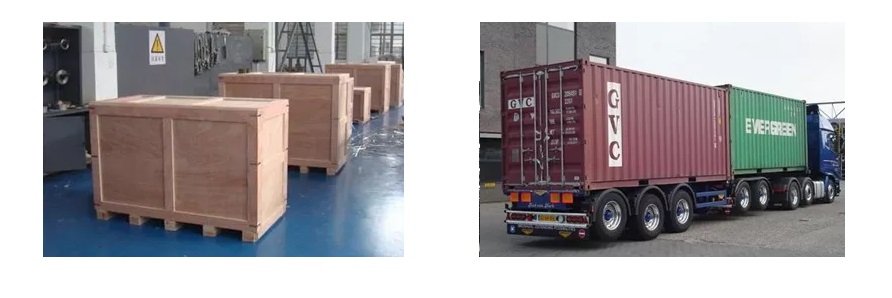
Large Machine Packing:
Packing a large machine for sea shipment can be a complex and challenging task. However, with careful planning and attention to detail, it is possible to pack a large machine for sea shipment in a way that will ensure that it arrives at its destination in good condition. Here are some general steps that a manufacturer may follow when packing up a large machine for sea shipment:
- Clean and prepare the machine: Before packing, the machine should be thoroughly cleaned and prepared. All fluids, such as oil or coolant, should be drained, and any loose or detachable parts should be removed.
- Disassemble the machine: If possible, the machine should be disassembled into its component parts to reduce its overall size and make it easier to pack. Each part should be carefully labeled and numbered to ensure that it can be easily reassembled at the destination.
- Protect delicate parts: Delicate or fragile parts should be wrapped in protective material, such as bubble wrap or foam, to protect them from damage during transit.
- Build a custom crate: A custom crate should be built around the machine to provide a secure and sturdy enclosure. The crate should be made of durable material, such as plywood, and should be designed to fit the machine snugly. The crate should also include braces or supports to prevent the machine from shifting during transit.
- Add cushioning material: The crate should be filled with cushioning material, such as packing peanuts or air pillows, to provide extra protection and prevent the machine from moving or shifting during transit.
- Securely fasten the machine: The machine should be securely fastened to the crate to prevent it from moving or shifting during transit. This may involve using straps, bolts, or other fasteners to hold the machine in place.
- Seal and label the crate: The crate should be securely sealed with high-quality packing tape, and should be clearly labeled with the machine’s name, weight, and any other relevant information. The destination address and contact information should also be clearly marked on the crate.
Overall, packing a large machine for sea shipment requires careful planning and attention to detail. It is important to use high-quality materials and follow proper packing procedures to ensure that the machine arrives at its destination in good condition. A professional packing and shipping company may be consulted to ensure that the machine is properly packed and prepared for sea shipment.
Related Products
Related Articles
Frequently Asked Questions (See more FAQ)
How fast is a 30kW charger?
A 30kW charger refers to a charging station or device that is capable of providing a power output of 30 kilowatts. To understand how fast this charger is, we need to consider the charging time required for a specific battery or device.
The charging speed of a 30kW charger can vary depending on several factors, such as the battery capacity, charging efficiency, and the charging protocol being used. However, we can make a general estimation of the charging speed based on the power output.
Let’s say we have a battery with a capacity of 30 kilowatt-hours (kWh), which is commonly used for electric vehicles. In this case, the charger can theoretically charge the battery from 0% to 100% in one hour, as the power output (30 kW) is equal to the battery capacity (30 kWh). However, it’s important to note that real-world charging times can be longer due to factors like charging losses and tapering of charging speed as the battery fills up.
If the battery has a higher capacity, such as 60 kWh, the 30kW charger would take approximately two hours to charge it fully. Conversely, if the battery capacity is lower, say 15 kWh, the charger would be able to charge it in about 30 minutes.
It’s worth mentioning that charging times can vary among different chargers, and newer fast-charging technologies may offer even faster speeds. Additionally, some devices may have built-in limitations that affect the charging speed.
In summary, a 30kW charger has a moderate charging speed, and the actual charging time depends on the battery or device being charged.
Is there a portable charger for EVs?
Yes, there are portable chargers available for electric vehicles (EVs). These portable chargers, also known as portable EVSEs (Electric Vehicle Supply Equipment) or portable charging stations, allow EV owners to charge their vehicles on the go or in locations where a fixed charging station may not be available.
Portable chargers for EVs typically come in the form of a compact and lightweight device that can be easily carried and connected to the vehicle. These chargers usually have a plug that can be inserted into a standard electrical outlet, such as a household socket, or sometimes they require a higher voltage outlet, like a NEMA 14-50.
When using a portable charger, the charging speed may be slower compared to dedicated charging stations with higher power outputs. The charging speed depends on the power rating of the portable charger and the capacity of the vehicle’s battery. Portable chargers often have power ratings ranging from 1.4 kW to 7 kW, which means they may take several hours to fully charge an EV, depending on the battery size.
Portable chargers provide a convenient option for EV owners who need to charge their vehicles in various locations, such as at home, at work, or during long trips. They can be carried in the trunk of the vehicle and used when needed, offering flexibility and peace of mind for EV owners.
It’s important to note that the compatibility of portable chargers can vary based on the make and model of the EV. It is advisable to check the specifications and requirements of the specific EV model to ensure compatibility before purchasing a portable charger. Additionally, it’s recommended to follow the manufacturer’s instructions and safety guidelines when using portable chargers to ensure proper and safe charging.
How fast is 32 amp EV charger?
A 32 amp EV charger refers to a charging station or device capable of providing a charging current of 32 amperes. To determine how fast this charger is, we need to consider the charging power it can deliver.
The charging power is calculated by multiplying the charging current (amperes) by the charging voltage (volts). In the case of electric vehicles, the charging voltage is typically around 240 volts in residential settings.
So, a 32 amp charger operating at 240 volts would provide a charging power of approximately 7.7 kilowatts (32 amps * 240 volts = 7,680 watts or 7.7 kW).
When charging an electric vehicle, the charging speed is influenced by both the charging power and the battery capacity of the vehicle. Assuming an average electric vehicle battery capacity of 40 kilowatt-hours (kWh), we can estimate the charging time.
If we divide the battery capacity (40 kWh) by the charging power (7.7 kW), we find that it would take approximately 5.2 hours to fully charge the vehicle with a 32 amp charger.
It’s important to note that this estimation doesn’t account for charging losses and other factors that can affect charging efficiency. In reality, the charging time may be slightly longer.
Overall, a 32 amp EV charger offers a moderate charging speed, and it can be suitable for overnight or extended charging periods, such as when charging at home or during work hours. For faster charging, higher-powered chargers, such as those rated at 50 amps or more, may be preferred.
What size wire do I need for EV charger?
To determine the appropriate size of wire for an EV charger, you need to consider factors such as the charging current, distance between the charger and the electrical panel, and the electrical code requirements in your area. Generally, it is recommended to consult a qualified electrician for accurate guidance based on your specific situation. However, I can provide you with some general information.
The size of wire is determined by its gauge or AWG (American Wire Gauge) rating. A higher AWG number indicates a smaller wire diameter, while a lower AWG number represents a thicker wire. Thicker wires have a lower electrical resistance and are capable of carrying higher currents more efficiently.
For most residential EV chargers, the commonly used wire sizes are typically 8 AWG, 6 AWG, or 4 AWG. These wire sizes can handle the current required for charging most electric vehicles safely and efficiently.
However, the appropriate wire size also depends on the charging current of your specific EV charger. Different chargers may have different current ratings, such as 30 amps, 40 amps, or higher. Higher current chargers will require thicker wires to accommodate the increased current flow.
In addition to the charging current, the distance between the charger and the electrical panel also affects wire sizing. Longer distances require thicker wires to compensate for voltage drop, which can occur as electricity travels through the wire.
It’s crucial to comply with the electrical code requirements in your area to ensure safe and code-compliant installation. These requirements may specify the minimum wire size based on the charging current and distance.
To determine the exact wire size for your EV charger installation, it’s best to consult a qualified electrician who can assess your specific needs, consider local regulations, and make appropriate recommendations for your situation.


